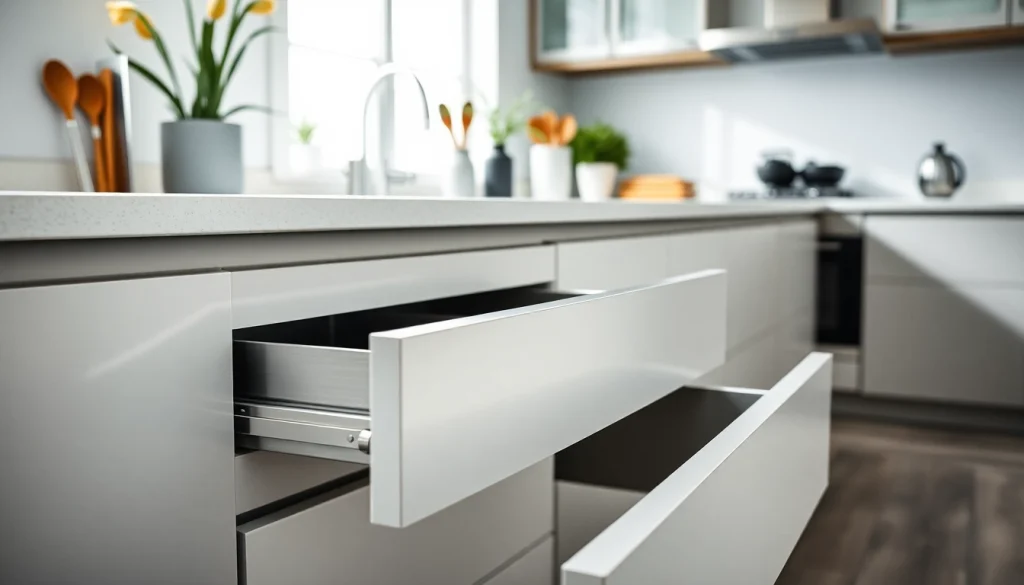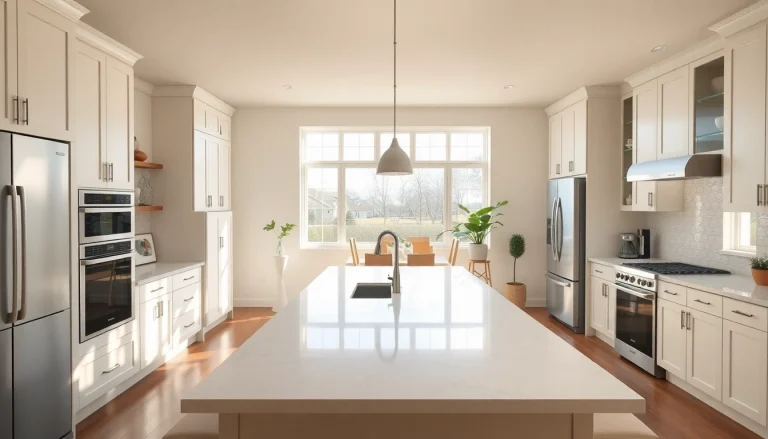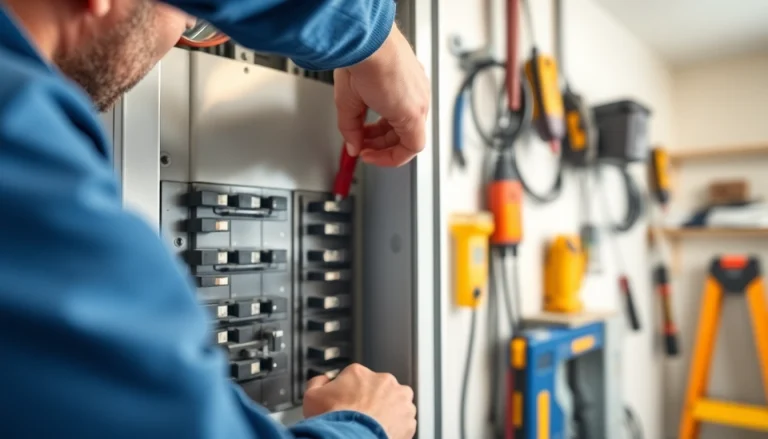
Understanding the Slim Box Drawer System
What is a Slim Box Drawer System?
The Slim box drawer system represents an innovative evolution in the realm of interior storage solutions. Characterized by its minimalistic profile and sleek design, this drawer system optimally utilizes available space while contributing to the aesthetic appeal of modern interiors. Designed for various applications, the slim box system integrates soft-close mechanisms that prevent slamming, ensuring a serene and sophisticated user experience. Made from durable materials, these systems are ideal for residential, commercial, and industrial settings.
Key Features and Benefits
Among the standout features of slim box drawer systems are their ultra-thin construction, efficient storage capabilities, and soft-close technology. Here are some key benefits:
- Space Efficiency: The slim profile of the drawer system maximizes the usable space without compromising aesthetics. This makes it an ideal choice for kitchens, bathrooms, and offices where space is often limited.
- Enhanced Accessibility: Smooth gliding mechanisms allow for easy access to stored items, ensuring convenience during daily use.
- Durability: Constructed from high-quality materials, the drawers are built to withstand regular use while maintaining their structural integrity.
- Soft Close Functionality: With integrated soft-close technology, the drawers close gently and silently, reducing the risk of injury and extending the life of the drawer system.
Applications in Various Settings
Slim box drawer systems are incredibly versatile and can be applied in numerous settings, including:
- Residential Kitchens: Ideal for modern kitchen designs, providing an understated look while offering substantial storage.
- Offices: Useful in desk drawers, keeping documents and supplies organized and easily accessible.
- Retail Spaces: Slim drawers can be incorporated into displays for a sleek presentation of products.
- Bathrooms: A popular choice for bathroom vanities, where storage is often confined to smaller spaces.
Designing with Slim Box Drawer Systems
Choosing the Right Materials
Selecting the right materials is essential to ensure the drawer’s longevity and visual appeal. Options include:
- Metals: Steel and aluminum provide strength and durability. Metal drawer boxes can be powder-coated to achieve different finishes.
- Wood: Plywood or solid wood can offer a more traditional look, harmonizing with classic interior designs.
- Composite Materials: These materials provide an affordable alternative to solid wood while offering a contemporary appearance.
Color and Finish Options
Color and finish can significantly impact the design of slim box drawer systems. Common options include:
- Matte Finish: Provides a modern look, reducing glare, and can complement minimalist design schemes.
- Glossy Finish: Adds a touch of luxury and reflects light, making spaces feel brighter and more expansive.
- Custom Colors: Many manufacturers offer custom color options, allowing you to match your drawers to existing decor.
Integrating with Existing Decor
Integrating slim box drawer systems into existing decor requires thoughtful planning. Consider the following:
- Style Cohesion: Ensure that the drawer design complements the overall style of the space, whether it’s contemporary, traditional, or eclectic.
- Functional Layouts: Think about the ergonomics of drawer placement: drawers should be easily accessible without obstructing adjoining elements.
- Contrast and Complement: Use contrasting finishes (like matte drawers in a glossy space) to create a visual impact while also maintaining harmony.
Installation Guide for Slim Box Drawer Systems
Tools Required for Installation
The installation of slim box drawer systems can be straightforward, provided you have the right tools. Essentials include:
- Drill/driver
- Screwdriver
- Measuring tape
- Level
- Pencil for marking
- Safety goggles
- Clamps (optional)
Step-by-Step Installation Process
Follow these steps for successful installation:
- Measure the Space: Use a measuring tape to determine the dimensions of the cabinet or built-in space.
- Mark Placement: Mark where the drawer slides will attach to both the side of the cabinet and the drawer box.
- Install the Drawer Slides: Secure the slides to the marked areas on the cabinet. Ensure they are level for smooth operation.
- Attach Drawer Box: Position the drawer box onto the installed slides, making sure it aligns properly. Then, secure it according to the manufacturer’s instructions.
- Final Adjustments: Test the drawer for smooth operation. Adjust as necessary to fine-tune alignment or to strengthen stability.
Common Mistakes to Avoid
To ensure a successful installation, avoid the following common pitfalls:
- Skipping measurements, which can lead to ill-fitting drawers.
- Neglecting to level the slides, resulting in uneven drawer movement.
- Using the wrong hardware for installation; always refer to the specifications provided in the drawer’s manual.
Maintenance Tips for Longevity
Regular Cleaning and Care
To extend the life of your slim box drawer systems, implement a regular cleaning routine:
- Dust Regularly: Use a soft cloth to remove dust from surfaces and inside the drawers.
- Avoid Liquids: Keep moisture away from hardware components to prevent rust.
- Lubricate Mechanisms: Periodically apply a lubricant to the slides to maintain smooth operation.
Identifying Wear and Tear
Regular inspections can help identify signs of wear and tear:
- Listen for any unusual noises during operation, which may indicate a need for lubrication or repair.
- Check for loose screws or hardware to ensure drawers remain securely attached.
- Inspect edge seams for signs of delamination or separation if using composite materials.
When to Replace Components
Understanding when to replace components can prevent small issues from escalating:
- If a drawer is consistently difficult to open or close, it may signify that parts need replacing.
- Replace cracked or broken slides, as they can affect the entire drawer system’s performance.
- Consider updating the hardware if it starts showing signs of rust or wear down, as this enhances the overall functionality.
Comparing Slim Box Drawer Systems with Other Options
Pros and Cons of Slim Box vs Traditional Drawers
When deciding between slim box drawer systems and traditional drawers, it’s essential to weigh the advantages and disadvantages:
- Pros of Slim Box Drawers:
- Space-saving design
- Modern look
- Smoother gliding systems
- Cons:
- Can be more expensive upfront
- May require specific installation techniques
Cost Analysis of Slim Box Drawer Systems
The cost of slim box drawer systems can vary significantly based on several factors:
- Material Type: Metal typically costs more than wood or composite materials.
- Brand Reputation: Established brands may have higher pricing due to their perceived quality and customer service.
- Accessories: The inclusion of accessories like soft-close mechanisms or custom finishes can raise overall expenditure.
Consumer Feedback and Reviews
When considering a purchase, consumers often turn to reviews and feedback. Common sentiments around slim box drawer systems include:
- High praise for the functionality and ease of use.
- Concerns regarding installation complexity, particularly among DIY enthusiasts.
- Appreciation for the aesthetic upgrade these systems bring to modern living spaces.






